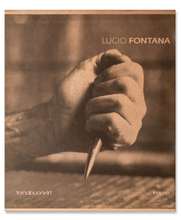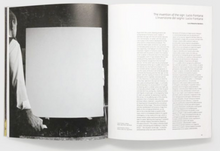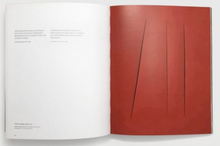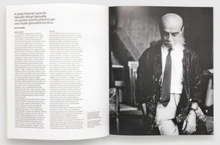texts by Enrico Crispolti, Luca Massimo Barbero, Edward Lucie-Smith
This publication is composed of two volumes. The first is the catalogue of the exhibition that Tornabuoni Art gallery hosted in London dedicated to Lucio Fontana and it is the result of in-depth archival research. It features texts by Enrico Crispolti, author of Lucio Fontana. Catalogo Ragionato di sculture, dipinti, ambientazioni (Milan, 2006), Luca Massimo Barbero, Associate Curator of the Peggy Guggenheim Collection in Venice and author of Lucio Fontana: Catalogue Raisonné of the Works on Paper (Milan, 2014), and renowned art critic Edward Lucie-Smith, as well as exclusive, as yet unpublished contemporary photographs by Ugo Mulas and Lothar Wolleh.
The essays give great insight into the origins, content and features involved in the works and in the artistic movement that the artist himself referred to as Spazialismo, illustrating the underlying reasons for the growing international interest in Fontana’s work.
The second one, edited by Enrico Crispolti, is the catalogue published for the exhibition dedicated to the artist at Art Basel 2017, and it is the result of research conducted to provide a deeper understanding of a specific cycle of works by Lucio Fontana. The paintings on show, and analysed in this catalogue, belong to his series The End of God. They were painted on egg-shaped, identically-sized canvases, and feature constellations of “holes” and/or slashes and/or scratches, which are sometimes limited to one part of the monochromatic canvas, while others cover the entire surface painted in oils (and sometimes sequins). In an interview with Carlo Cisventi in 1963, the artist explained: “For me, they represent the infinite, the inconceivable, the end of figurative representation, the beginning of nothingness.”








